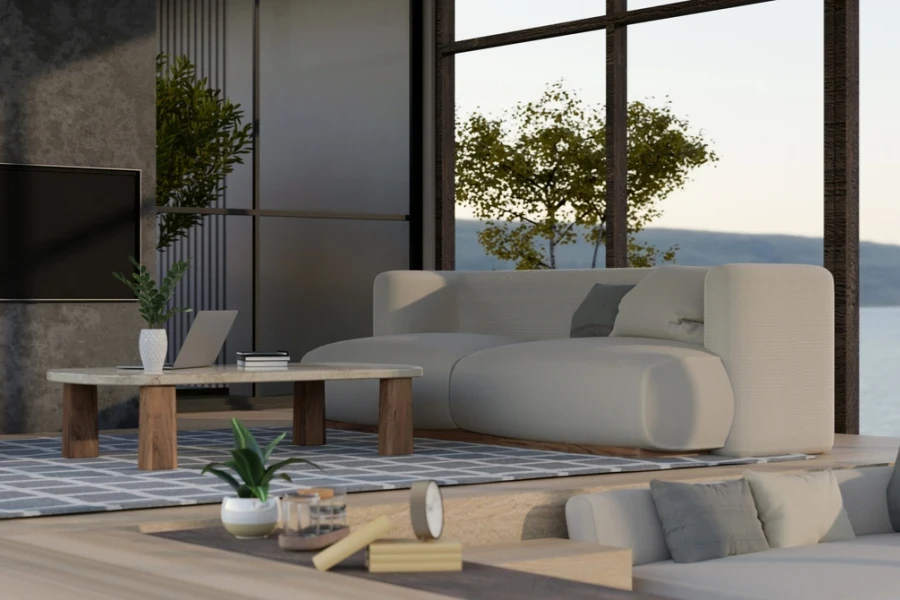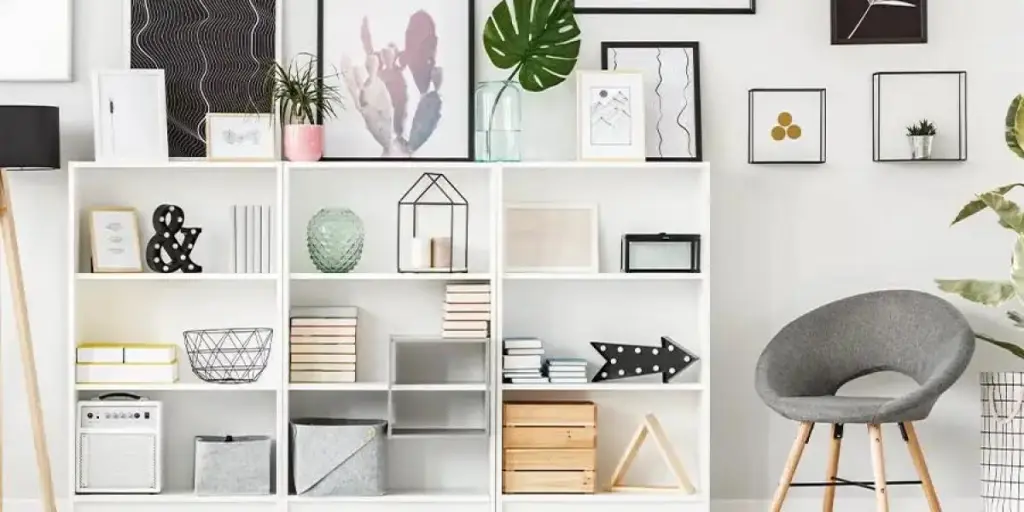Straight from the ’70s, the conversation pit has made a huge comeback in recent years and has become one of the major protagonists in the interior design industry, as well as one of the most sought-after living room layouts.
It is a circumscribed space, almost a nook, often lowered, to underline the privacy of a corner of the home. It is a sort of small, recessed nest where homeowners can find refuge with their family, friends, and guests to enjoy a pleasant escape from the daily routine, creating a corner of relaxation and refreshment in their sunken living room.
The conversation pit is a welcoming and cozy space and is now back in vogue, first on social media, Twitter, and TikTok, then in reality. So how should furniture stores and designers leverage this trend and offer their old and potential new customers what they’re looking for? The answer is in this article!
Table of Contents
The history of conversation pit
Trends and characteristics
Final Thoughts
The history of conversation pit

Despite reaching their peak in the 70s, conversation pits were already a thing in the 50s, when the economic boom in the United States that followed the war’s end had caused the real estate market to take off, giving rise to numerous ranch houses in the American suburbs.
However, the history of the conversation pit has its roots in times much further back than the decades between 1950s and 1970s. The first example of a conversation pit dates back to 1927 and was designed by architect Bruce Goff as part of a larger project for the artist Adah Robinson’s home in Tulsa (Oklahoma). Then, another project brought conversation pits into fashion, opening the doors to what would later become a real trend: the Finnish architect Eero Saarinen and the designer Alexander Girard gave life to a masterpiece for the private residence of the magnate Miller in Columbus, Indiana, now known as the Miller House.
After that, the hollow furnishing system became popular among many, and from an unusual, distinctive element, it transformed into a design common to many domestic spaces of the time, becoming a must-have for American peripheral areas reborn in the post-war period.
Culture and revival

The sunken seating area is an element of American culture and, as such, is featured in TV series and movies, especially in Mid-Century settings. For example, the beautiful living room in Jack and Alice’s home in Don’t Worry Darling, directed by Olivia Wilde and released in 2022. In addition to the famous Kauffman House in Palm Springs, visible in the opening scene and a clear statement of the film’s style, the living room features a contemporary, floor-level, and modular version of the conversation pit while maintaining harmony with its more classic interpretation.
The return of this architectural feature is due to a total rediscovery of vintage furniture and design. This nostalgia grew in the 2000s (which paid little attention to interior design) and exploded during the pandemic. An example is Pierre Paulin’s Dune, which is the sofa that many celebrities like Frank Ocean and Kanye West love.
After 2020, our homes have become a place to live and a refuge where we can socialize with our loved ones. It is no coincidence that if creating a sunken living area with steps in existing apartments and homes is difficult, a sunken lounge or even some sunken rooms are often present in newly built ones. They are both a focal point and a place to hide.
Trends and characteristics
With its mix of retro charm and modern functionality, the conversation pit offers the perfect opportunity to create corners of comfort and intimacy within homes.
In a market increasingly oriented towards personalized and visually striking solutions, retailers should help their customers find the ideal combination of furniture and accessories that suit their needs and style to build loyalty and fully satisfy those looking for original and welcoming solutions.
What elements are needed

The conversation pit was born in an era when “a house was forever.” Back then, redesigning homes and changing the interior wasn’t really something people used to do; homeowners wanted to create a well-defined space without the need to use any type of furniture, and a sunken space would have been hardly changed and used to simplify the design and furnishings.
Nowadays, consumers like to change their living space more often but can still create a conversation pit using its key elements: a large, almost oversized couch (or more couches), some armchairs, and a central coffee table.
This area of the house is supposed to exude comfort: sofas and other furniture must be squishy, with rounded corners, voluminous, and upholstered with soft material. The same goes for décor, such as throw pillows and blankets or some cozy rugs that create an even more intimate space.
Architecture and shapes

Today, only a few of us have a sunken area with small steps in our homes or apartments that we can use to arrange a conversation pit. In 2020, most people will live in smaller spaces, and the kitchen, living, and dining rooms will often be open-plan spaces.
Luckily, a great conversation pit can also be on floor level with a lounge area that reflects the elements listed above and features the right shape.
L-shaped sofas are ideal for recreating the feeling of a nestled space in a corner of a large interior. Customers can place a large coffee table in front of it and two or three armchairs to create a square nook.
On the other hand, curved sofas can be organized around a rug to recreate a lounge pit that can feel sheltered and cozy even in the middle of a broad space.
Indoors or outdoors

Of course, conversation pits were born indoors, but they are also perfect for enjoying outdoor spaces like gardens, decks, backyards, and terraces. Customers need as little as an unused space between two walls or a gazebo to arrange their first conversation pit.
In this case, the choice should go towards water-resistant materials and natural materials such as treated rattan, bamboo, and wood that can withstand the proof of weather.
In open spaces, the tendency is to delimit areas dedicated to conversation. After all, relaxing by allowing yourself the possibility of having a living room is a luxury you need to afford, especially in areas devoted to domestic relaxation.
In an outdoor area, concrete slabs or bricks can create seats and round or square spaces with even a fireplace in the center.
Final Thoughts
The return of the conversation pit is an unmissable opportunity for furniture retailers. The combination of nostalgia for vintage design and the growing demand for comfortable living spaces has made this trend increasingly popular.
Retailers should focus on creative solutions that combine style and functionality, offering their customers not just furniture but real experiences of comfort and sociability.




